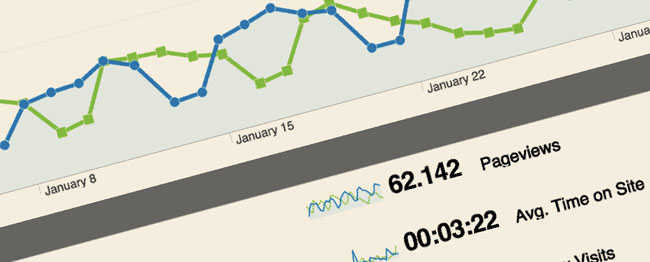How are you using measurement to track progress towards your organization’s goals?
Recently, Bill Gates published an article in The Wall Street Journal in which he discussed some of the global challenges that his foundation is tackling. While the initiatives he describes are far-reaching and complex, the Gates Foundation uses a deceptively simple process for all of its projects: “setting clear goals, choosing an approach, measuring results, and then using those measurements to continually refine our approach.” As Gates points out, you can’t improve the human condition without measuring your progress.
We have used this straightforward process for a variety of Ramey clients, in dramatically different industries and categories, in geographies across the world. And like Mr. Gates, we have found that you can achieve remarkable progress when you set a clear goal and “find a measure that will drive progress toward that goal.”
We are living in an amazing time right now. While the pace of change can be dizzying at times, we are able to leverage analytics and data in order to adjust our clients’ message and deliveries in real time. We might measure how our messages boost awareness or stimulate trial for new products or services, but in the bigger picture, we are helping our clients improve the health of children and their families, upgrade the region’s electrical grid, attack the epidemic of teen pregnancy and attract new industry in order to create thousands of new jobs.
How are you using measurement to track progress towards your organization’s goals? If you haven’t thought about it in a while, you may be surprised at the variety of ways that you can use analytics to measure progress. Here are a few ways that we have tracked results for our clients:
TRACKING HOW HARD YOUR ADVERTISING IS WORKING
You’ll read below how we measure real time results using digital marketing, but we also still employ classic analytics to track the effectiveness of our messages. For example, using a Vista Print Effectiveness study for a high-end client in a national magazine, we were able to see that our creative was not only 21 percentage points higher in total recall than the issue average, but that it also outperformed the issue average on seven out of eight actions taken. This kind of feedback lets us know what needs to be dialed-up or dialed-back in our messaging as we progress towards our goal.
DRIVING SATISFACTION & PROFITABILITY
Measurement can show positive patterns over time. For a client in the energy sector, we’ve tracked twelve successive quarters of increasing customer satisfaction indexes. Why is this important? The global consulting firm, Oliver Wyman, reports that the category’s top drivers of customer satisfaction deliver long-term ROE nearly two percent above the rest of the pack – and that if all companies in the sector were equally effective, their collective annual earnings would be $5 billion higher. Those are significant dollars.
TRACKING MEDIA’S ROI
Sometimes, we want to track how well we are doing against our competition. Our “Brains and Brawn” media planning philosophy stretches client dollars further than competing brands, which is critical when competitors are outspending our client. In one study, we analyzed average savings versus rate card, bonus pages, and merchandising efforts over a three-year period. Each year, we were able to stretch the client’s media dollar more than $1.55 for each $1 invested.

MEASURING PR’S POWER TO BUILD THE “WORLD’S BEST”
Paid media isn’t the only thing we measure. Over the course of three years, we tracked the cumulative growth in PR impressions and media value in our outreach to national magazines and correlated it to the increase in our client’s national rankings. At the end of the campaign, our client was the highest ranked hotel in service in Travel+Leisure magazine’s “World’s Best” awards, which boosted top-line revenues and bottom-line profits.
INCREASING ENGAGEMENT ONLINE
As mentioned, digital marketing allows us to track consumer engagement in real time and adjust our message and media accordingly. With solid analytics, we can add or drop online publishers, adjust ad networks and tweak our message to constantly improve engagement. Using a geo-targeted strategy for one client, we have dramatically improved click-through rates over time – from 5-7% (banners) in year one to 8-10% (banners), 10-12% (in-banner video), and 25+% (video) in year three.
MEASURING YOUR “DIGITAL IQ”
Speaking of digital, the consulting firm L2 measures the Digital IQ of luxury brands using 675 quantitative and qualitative data points diagnosing their digital strengths and weaknesses across all forms of digital, social and mobile – correlating the ability of brands to engage with consumers and the resulting positive effect on financial performance. In their last home category study, L2 ranked our client as the top performer in the category, which was a positive endorsement that we were on the right track. At the same time, the report helped point out opportunities for improvement, such as the need for our client to develop a more robust social media strategy.

BUILDING BRAND EQUITY OVER THE LONG HAUL
Analytics don’t always have to be measured in real time. Over the course of several years, the firm BrandEconomics tracked the increase in brand strength for one of our clients (which Fortune magazine later recognized as one of its top ten “Breakaway Brands,” second only to the iPod). BrandEconomics calculates the financial effect that a strong brand contributes to the market value of each firm, noting that companies with strong, well regarded brands can have an intangible value of 250% of annual sales.
As you can see, we measure many, many moving parts for our clients. Some are focused on a specific metric, while others utilize a balanced scorecard or dashboard to determine how well their marketing efforts are performing. In each case, though, we have worked together to clearly articulate the goal, and through intentional tracking and measurement, we’re able to use ongoing data and feedback to drive progress toward that goal.
Ask yourself: Have we set a clear goal for our organization? What approach will we take to meet that goal? How might we measure results on an ongoing basis? And how will we use those measurements to continually refine our approach?
No matter what business you’re in, setting clear goals and tracking results will help take your organization to a higher level of performance.
SOURCES
Electric Perspectives, January/February 2012. “A Closer Bond,” by Michael Britt and Gerry Yurkevicz.
Wall Street Journal, January 25, 2013. “My Plan to Fix The World’s Biggest Problems,” by Bill Gates.
Fortune, September 25, 2006. “Breakaway Brands,” by Ellen McGirt.
 Chris Ray, CEO at The Ramey Agency.
Chris Ray, CEO at The Ramey Agency.



